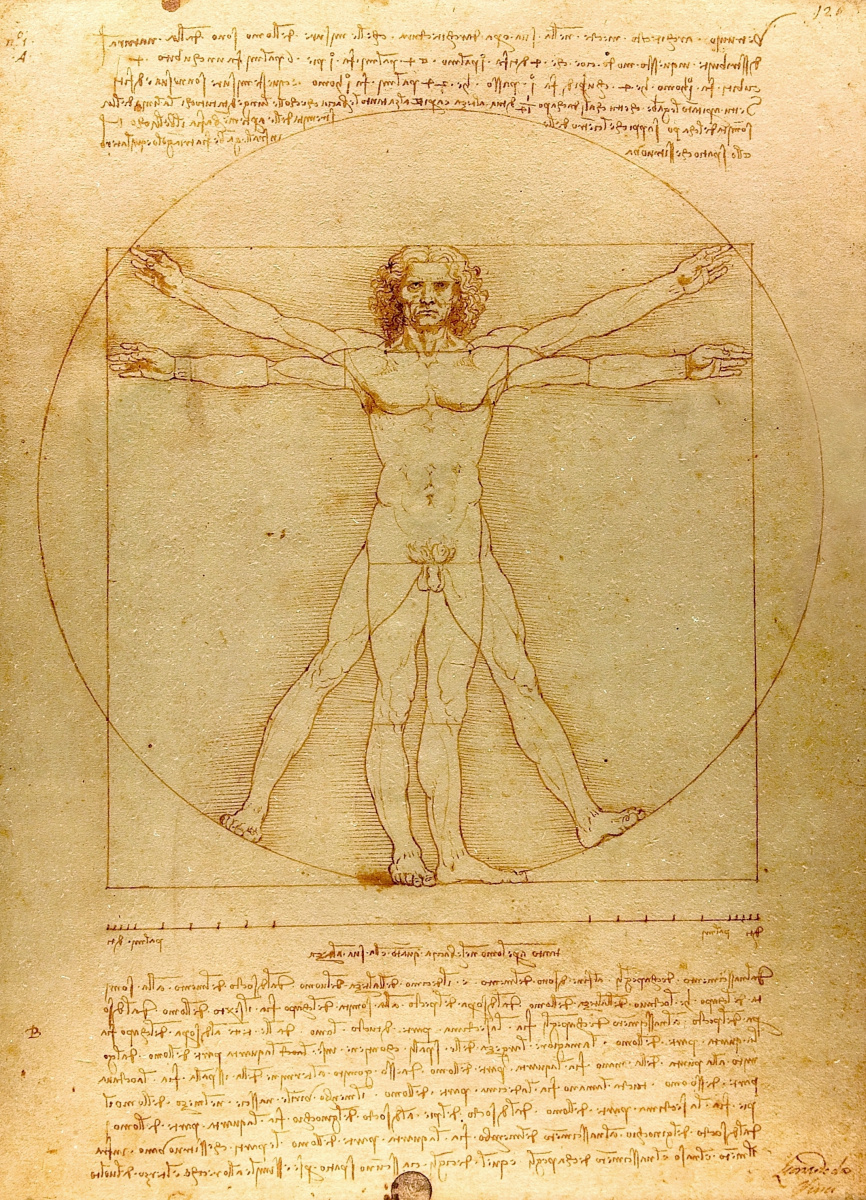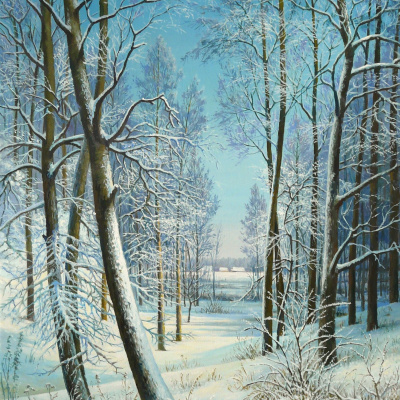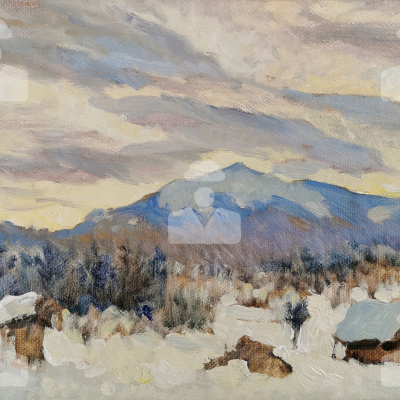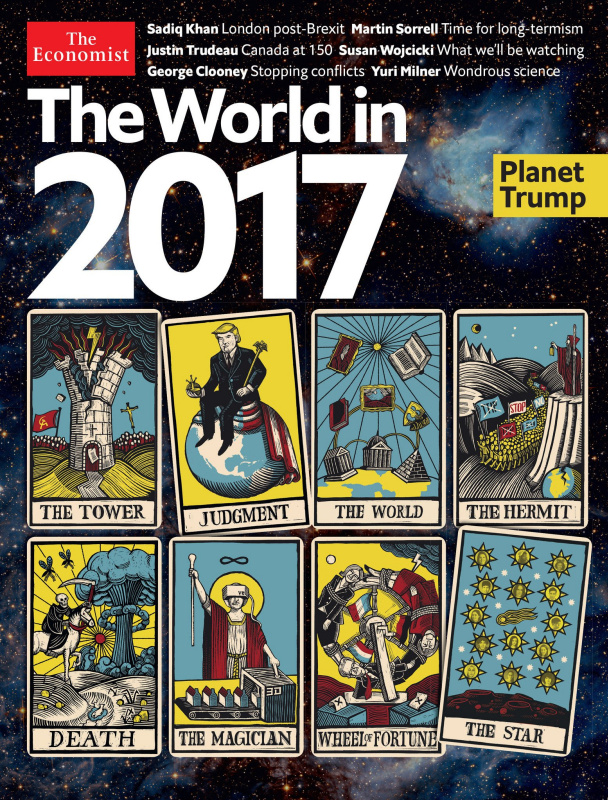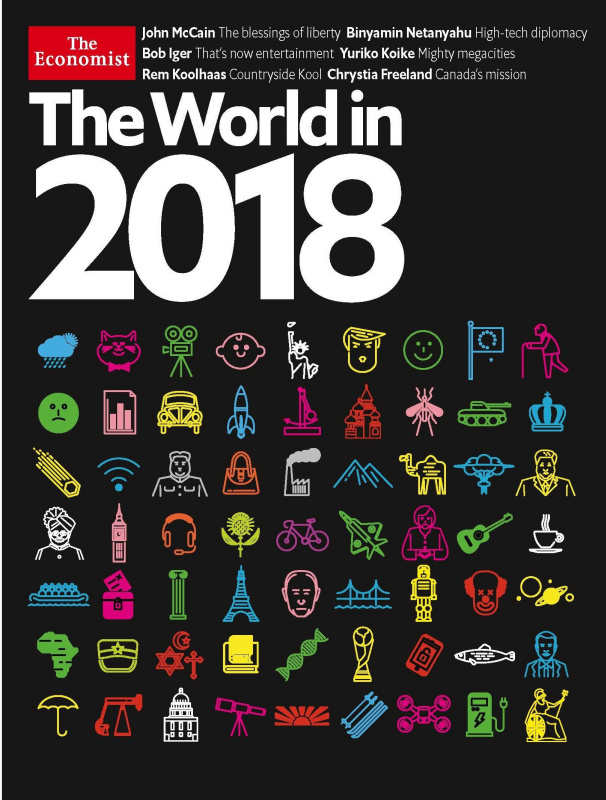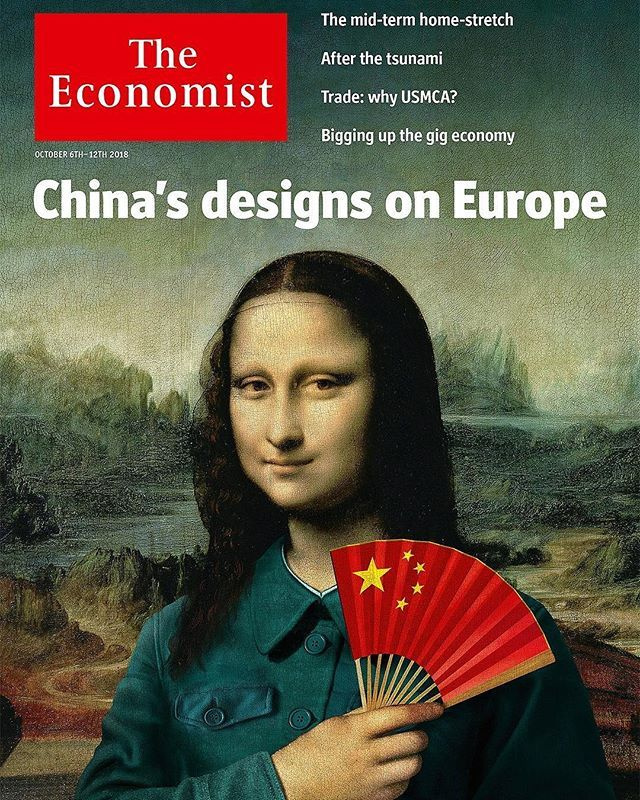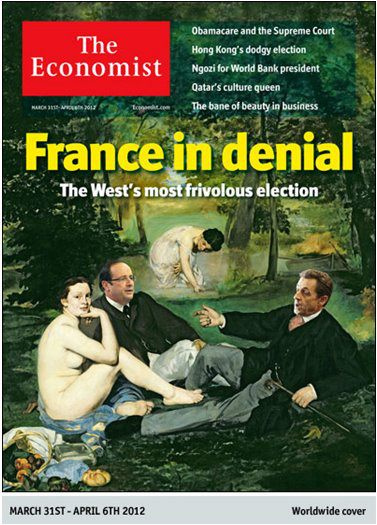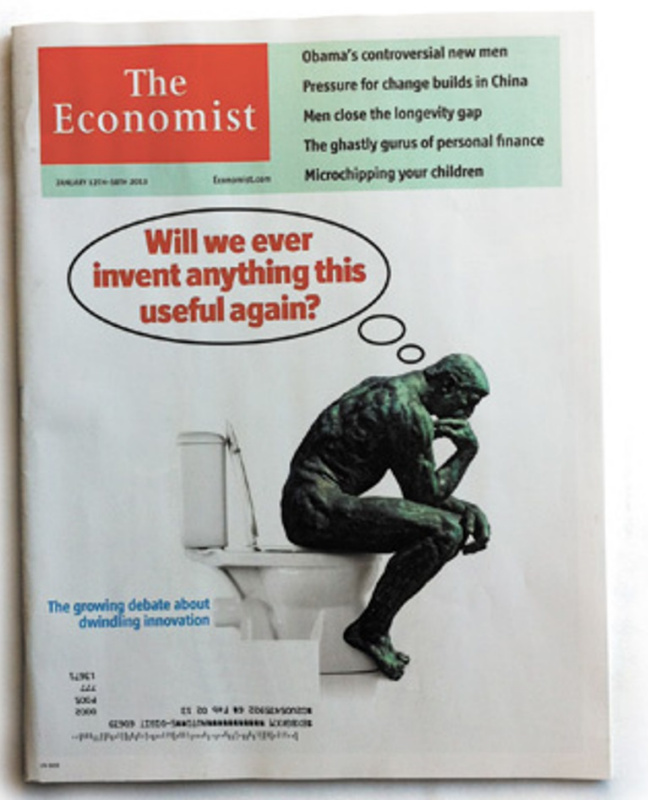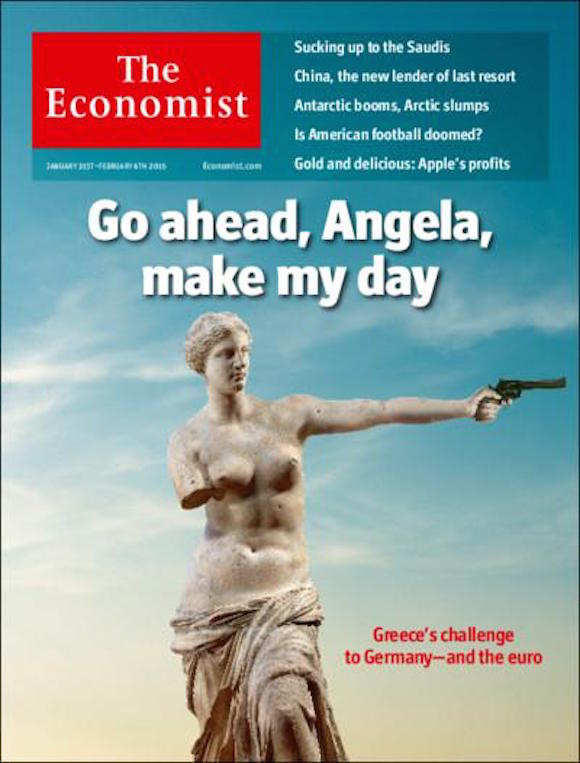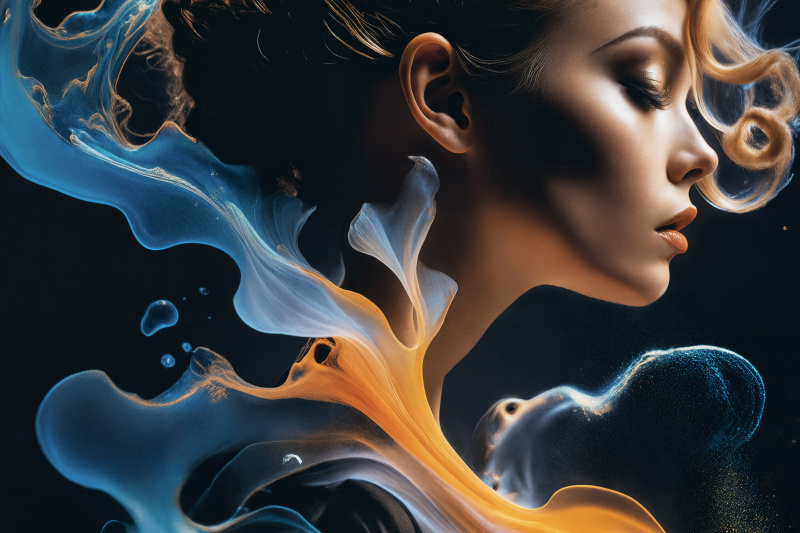Every year, the reputed magazine The Economist publishes a special edition with a typical cover showing ‘predictions' about politics and economy. The cover of these editions is an elaborate collection of images referring to various people and concepts. While the meaning of some of these images is obvious, others appear to be coded for "those in the know". This year’s edition is no exception. The Economist 2019 cover has some ominous encrypted messages in the style of Leonardo Da Vinci, seeming to be presented to the public by a secret society of the 18th century like the Illuminati.
Let’s try to figure out the Da Vinci code and what the Four Horsemen of the Apocalypse tried to tell us.

2019 marks the 500th anniversary of the death of Leonardo da Vinci. On the occasion, "The World in 2019", annual edition of The Economist, published a page from a newly discovered volume of Leonardo’s journal, written a few months before his death on May 2nd 1519, that records his visit to the year 2019, as the guest of a mysterious time-traveller.
Exhibitions in Paris, London, Florence, Krakow and other cities will be timed to this date. Leonardo da Vinci died at the age of 67 in his house, located near the royal castle of Amboise in the Loire Valley — the artist and inventor worked for King Francis I. Here, in the castle, his body found its last refuge.
Exhibitions in Paris, London, Florence, Krakow and other cities will be timed to this date. Leonardo da Vinci died at the age of 67 in his house, located near the royal castle of Amboise in the Loire Valley — the artist and inventor worked for King Francis I. Here, in the castle, his body found its last refuge.
Turin self portrait
1513, 33×22 cm
The first detail that one might notice is the mirror writing. The great master Leonardo often wrote backward and the reason he did that remains a mystery. Some claim that he did not want to smudge ink while he was writing; others believe that he did not want other people to steal his ideas. Someone believe that his backward writing might have something to do with him attempting to conceal esoteric knowledge.
On the cover of 2019 we could easily recognise some famous people — Donald Trump, Vladimir Putin, Mahatma Gandhi, Angelina Jolie, Walt Whitman, the greatest American poet, as well as the 17th century artist Artemisia Gentileschi.
On the cover of 2019 we could easily recognise some famous people — Donald Trump, Vladimir Putin, Mahatma Gandhi, Angelina Jolie, Walt Whitman, the greatest American poet, as well as the 17th century artist Artemisia Gentileschi.

The World in 2019 built on three decades of publishing success: this is the 33rd edition. A Kabbalistic master number that is always taken into account by these satanist magicians who usually invoke demonic powers for their purposes, and could not be more than striking and strange to see that the cover for 2019 lacks the already recognized images with which it is usually speculated about what is coming. The Economist isn’t just any publication — it is directly connected with the world’s elite. It is partly owned by the Rothschild banking family of England and its editor-in-chief, John Micklethwait, has attended the Bilderberg Conference several times. In short, the leadership at The Economist has inside knowledge of the elite’s agenda, and they do their best to promote it.
Left: The Economist cover 2019.
Left: The Economist cover 2019.
The Economist was founded in 1843 by James Wilson, a Scottish businessman from Hawick, to advance the repeal of the Corn Laws, a system of import tariffs. Tariffs were abolished in 1846, and the publication continued as a "political, literary and general newspaper," never giving up its belief in free trade, internationalism and minimal government intervention in the market.
Some publications interpret the cover of The Economist as a "message of the Rothschilds" - an influential clan of financiers, who allegedly owns a magazine. In fact, this is also a marketing — already on the part of experts and heading masters: according to the charter of The Economist Newspaper Limited, no individual or company can own or control more than 50% of the total share capital. Four different types of shares also exclude the Economist from one owner. Special shares "A" belong to individual shareholders, including the Rothschild family.
Some publications interpret the cover of The Economist as a "message of the Rothschilds" - an influential clan of financiers, who allegedly owns a magazine. In fact, this is also a marketing — already on the part of experts and heading masters: according to the charter of The Economist Newspaper Limited, no individual or company can own or control more than 50% of the total share capital. Four different types of shares also exclude the Economist from one owner. Special shares "A" belong to individual shareholders, including the Rothschild family.
So, what do the pictures on the cover of a British magazine say? The overall style "from Leonardo" can be perceived as a reminder of the Renaissance
, with its focus on new horizons that are opening to humanity. At the top of the cover, an arrow points from da Vinci’s flying machine towards the moon. This might be a reference to the many private companies aiming to travel to the moon in 2019. It should also be noted that we’re seeing the crescent moon on the cover, the main symbol associated with Islam.
Or maybe we are talking about the "Chinese mission"? Probably: the automatic station Chang’e-4 with a lunar rover was launched to the moon on December 7, and on January 3, it made a successful landing in the crater Karman and became the first spacecraft to make a soft landing on the back of the moon and successfully delivered the moon rover to Yuyuta-2 ". On the web, you can already see photos of our planet and the far side of the moon sent to Earth.
At the center of the cover is the Vitruvian Man, da Vinci’s famous sketch
depicting a man stretched out inside a circle and a square. It is said to be a representation of "the perfect man". Let’s just remember that The Economist features a "modern" Vitruvian Man: wears night-vision goggles, or maybe a VR headset, In his hands, he holds a leaf of cannabis, a baseball, and a smartphone. One could argue that all of these things are used to distract and pacify the modern man through drug companies, big tech, and entertainment.
Vitruvian man (the proportions of the human body)
1492, 34.3×24.5 cm
The Vitruvian Man also has two tattoos. On his forearm is a double-helix, the symbol representing DNA. This is most likely a reference to the intense research in DNA modification happening in the private sector. Was the Vitruvian Man’s DNA altered? Across his heart is tattooed "#MeToo". While the #metoo movement did expose some Hollywood creeps, it also has created a climate of censorship and repression where many people have accused, judged, and sentenced to expulsion in the public sphere.
On a somewhat related note, the Vitruvian Man holds a scale — a classic symbol representing justice. However, the scale is heavily slanted on the side that has 5 people versus 4. Is this the U.S. Supreme Court, who recently gained a new and controversial judge, or is this just the tilted scales of justice in 2019? Overall, the modern Vitruvian Man appears to be blinded, weakened, distracted, and repressed. The circle around him that once symbolized the spiritual realm is now the Earth.
On a somewhat related note, the Vitruvian Man holds a scale — a classic symbol representing justice. However, the scale is heavily slanted on the side that has 5 people versus 4. Is this the U.S. Supreme Court, who recently gained a new and controversial judge, or is this just the tilted scales of justice in 2019? Overall, the modern Vitruvian Man appears to be blinded, weakened, distracted, and repressed. The circle around him that once symbolized the spiritual realm is now the Earth.

The Economist cover 2019 (detail)
The image of the poet Walt Whitman (in the fragment below) next to the electric vehicle image is regarded as an allusion to the poem "I Sing the Body Electric" from the cycle "Leaves of Grass" and, as a result, further penetration of electricity as a form of energy into various branches of life. It wiil be the 200th anniversary of Walt Whitman’s birth, and it’s also the 150th anniversary of Gandhi’s birth (shown under English bulldog).
And the elephant — the unofficial symbol of the US Republican Party — is depicted with tusks in the form of a kind of growing schedule, and it moves in the direction of the English bulldog (we can see the inscription about Brexit, the UK’s exit from the European Union).
Again we look at the electric car: maybe the symbolism of the whole part of the composition — a hint that oil will soon become irrelevant on the world market? Oh, those mystics from The Economist!
And the elephant — the unofficial symbol of the US Republican Party — is depicted with tusks in the form of a kind of growing schedule, and it moves in the direction of the English bulldog (we can see the inscription about Brexit, the UK’s exit from the European Union).
Again we look at the electric car: maybe the symbolism of the whole part of the composition — a hint that oil will soon become irrelevant on the world market? Oh, those mystics from The Economist!


The discrepancy between the proportions of the "ideal" head of a person from da Vinci’s drawings and the proportions of Donald Trump’s head has been interpreted by some analysts as a possible change of the American president already in 2019. Mount Fuji is depicted between them — will Japan really get involved in this process? The other head of state featured on the cover is Vladimir Putin with the words "Putin's pipelines". This is a reference to the natural gas pipelines that are being built by Russia, in Syria, the Post-Soviet States, and even Europe.
The inscription "Putin's Pipelines" next to the profile of the Russian president and the panda — the symbol of China — are separated by the image of the Horsemen of the Apocalypse. It is quite similar to possible incidents related to the supply of oil to China …
Right behind Putin is Pinnochio — a puppet whose nose grows after telling a lie (Fun fact: The tale of Pinocchio is also a profound Masonic allegory). So the cover implies that someone will lie in 2019. But who? Trump and Putin (the only two politicians on the cover)? The elite in general? Kanye West? No clear answer. Maybe it’s just The Economist telling the masses that they are being lied to in general. So, no one can explain this dizzying moment in the complex. Perhaps Putin and Trump are two poles of forces, between which China will turn, who, judging by the panda’s face, will be unhappy with the position it will occupy.
The inscription "Putin's Pipelines" next to the profile of the Russian president and the panda — the symbol of China — are separated by the image of the Horsemen of the Apocalypse. It is quite similar to possible incidents related to the supply of oil to China …
Right behind Putin is Pinnochio — a puppet whose nose grows after telling a lie (Fun fact: The tale of Pinocchio is also a profound Masonic allegory). So the cover implies that someone will lie in 2019. But who? Trump and Putin (the only two politicians on the cover)? The elite in general? Kanye West? No clear answer. Maybe it’s just The Economist telling the masses that they are being lied to in general. So, no one can explain this dizzying moment in the complex. Perhaps Putin and Trump are two poles of forces, between which China will turn, who, judging by the panda’s face, will be unhappy with the position it will occupy.
- Right under Putin, standing on Northern Europe and facing America, are none other than the Four Horsemen of the Apocalypse. The Book of Revelation describes the Horseman as harbingers of the Last Judgement. The White Horse is said to symbolize Conquest, Pestilence and the coming of the Anti-Christ; The Red Horse represents War; the Black Horse is associated with Famine, and the Pale Horse brings Death. That’s some heavy-handed catastrophe-predicting stuff.
- This one can be interpreted in a few ways, and all of them are upsetting. It is a classic depiction of a stork carrying a newborn baby. However, there’s one important detail: There’s a barcode on the bag carrying a baby. This might be a reference to “designer babies”, a controversial practice that should gain momentum in 2019.
Here is an image of the Italian artist Artemisia Gentileschi, next to which ballot boxes are drawn — a clear demonstration of the obvious trend. Yes: #MeToo. Along with this, more and more women occupy high positions in all large organizations and corporations, become museum directors.
At the top of the cover we see "Angelina Jolie: Responding to Refugees". She might be used to promote the UN’s new "Migration Pact". Indeed, Jolie is currently the Special Envoy for UNHCR, the UN Refugee Agency.
At the top of the cover we see "Angelina Jolie: Responding to Refugees". She might be used to promote the UN’s new "Migration Pact". Indeed, Jolie is currently the Special Envoy for UNHCR, the UN Refugee Agency.
Self-portrait in the image of a martyr
1615, 32×25 cm
Artemisia Gentileschi was raped repeatedly by Agostino Tassi, an artist who worked with her father, Orazio Gentileschi. Artemisia’s father had hired Tassi to teach his 18-year-old daughter how to paint perspective.
Artemesia accused him of rape and then had to undergo a humiliating medical exam to "prove" that she had been a virgin prior to being assaulted by Tassi. During the seven-month-long trial, she was accused of being a whore by Tassi’s multiple witnesses. However, Artemesia prevailed, and Tassi spent a little less than a year in prison.
Artemesia accused him of rape and then had to undergo a humiliating medical exam to "prove" that she had been a virgin prior to being assaulted by Tassi. During the seven-month-long trial, she was accused of being a whore by Tassi’s multiple witnesses. However, Artemesia prevailed, and Tassi spent a little less than a year in prison.
Back to the cover "under Leonardo", everyone can get to the article about the artist, published in the publication, by QR-code. By the way, the Economist not for the first time used works of great masters on its covers.
Follow us on Instagram
Title illustration: The Economist cover, 1−2019.







